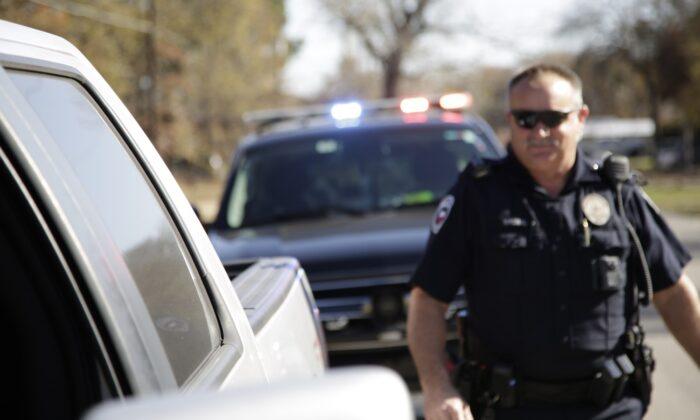As the number of new COVID-19 cases remains high in Ohio, Gov. Mike DeWine has shifted members of the state National Guard to assist at hospitals and medical facilities throughout the Southwestern part of the state.
DeWine announced his decision on Jan. 24 as resources from closed testing locations in Northeast Ohio are being shifted to support area hospitals or Guard missions in Southwest Ohio that include the Dayton and Cincinnati areas.
The Guard is offering support in every region of Ohio, whether for testing sites or assistance in hospitals, effective Jan. 26.
DeWine first deployed members of the Ohio National Guard to assist in hospitals in mid-December 2021 and increased the numbers a few weeks later.
There are slightly more than 2,000 Guard members throughout Ohio’s medical facilities to help alleviate the workload of health care workers.
The Guard and State Defense Force have nearly 2,500 service members executing 10 active missions including vaccinations, and in warehouses, and prisons.
Changes in deployment include new support for testing locations in Cincinnati and Springfield.

For the first time, Guard deployment has been implemented at Premier Health’s Miami Valley Hospital in downtown Dayton and at Dayton Children’s Hospital’s facility in Springfield.
For the second consecutive week daily COVID-19 patient counts in Ohio hospitals–including those in intensive care–fell, an encouraging sign that the Omicron surge is coming to an end at least in the state’s Northeast corner.
Although the state has not been seeing the record-setting new cases and hospitalizations it did a few weeks ago, the Omicron variant continued to remain high in the state (2,154 cases per 100,000 residents), except in Northeast Ohio where it has dropped.
The daily count of Ohio hospitalizations fell every day this past week.
State health officials and hospital management have expressed optimism that the Omicron variant has peaked in Cuyahoga County, which on Dec. 30, 2021, led the state in cases with 3,023 per 100,000 residents, according to the health department.
Cuyahoga County, covering the Greater Cleveland area, had 939.5 cases per 100,000 compared to the previous week’s 1,551 cases.
Week-over-week, the count was lower on Jan. 22 (5,376) than it was on Jan. 15 (6,285); that’s a decrease of 909 patients.
On Jan. 20, the department reported an average of 2,154.8 cases per 100,000 people, up from the previous week’s 1,883.8 cases.
Cuyahoga County, covering the Greater Cleveland area, had 939.5 cases per 100,000 compared to the previous week’s 1,551 cases.
“The Guard continues its mission to support the state’s hardest-hit hospitals as COVID-19 case rates have surged, driving hospitalizations and ICU admissions this month to their highest levels throughout the pandemic,” DeWine said in a statement.
As a result of decreasing demand, testing sites at the Stark County Fairgrounds in Canton and the Walker Center in Cleveland closed the weekend of Jan. 22 and 23.
Summit County’s drive-through testing location in Akron closed on Jan. 16.
Ohio’s death toll since the beginning of the pandemic in early 2020 now stands at 31,987 as of Jan. 23, according to health department numbers.
This figure comes after a comparatively large number reported last week, 1,065. In the prior three weeks, Ohio reported 850, 625, and 727 COVID-19 deaths, respectively.




